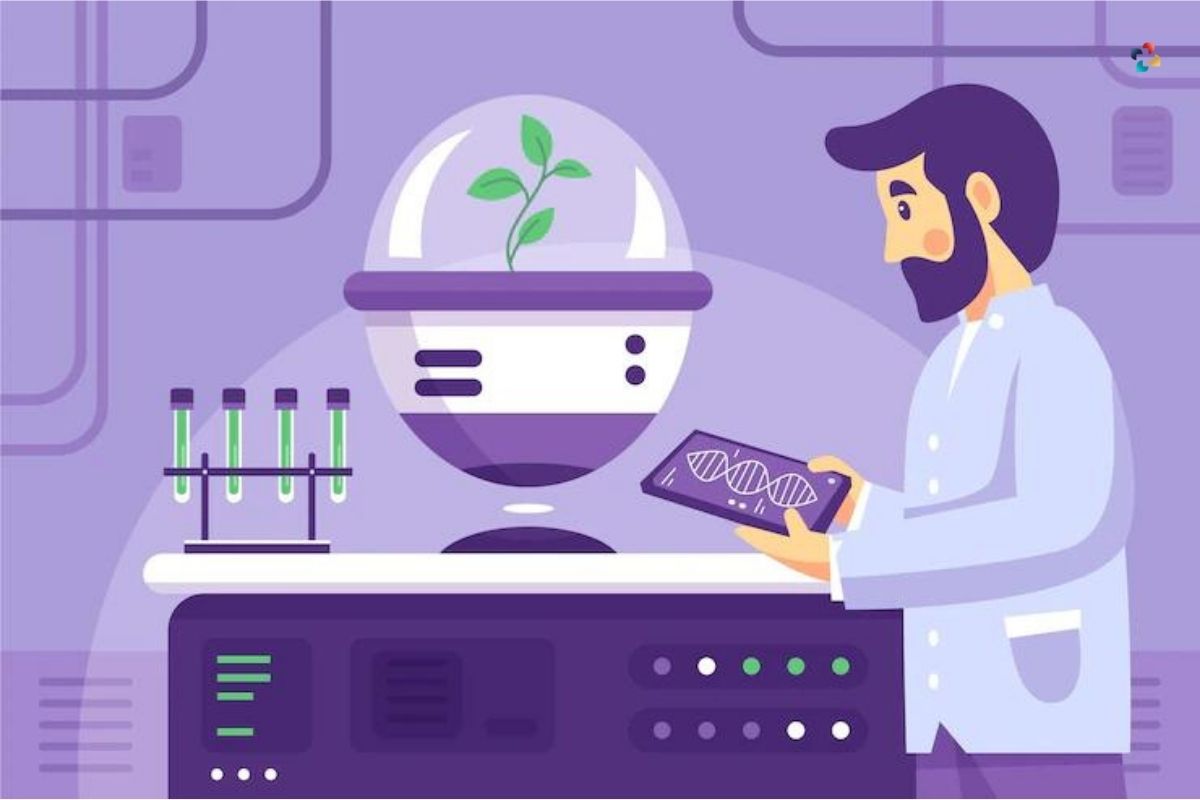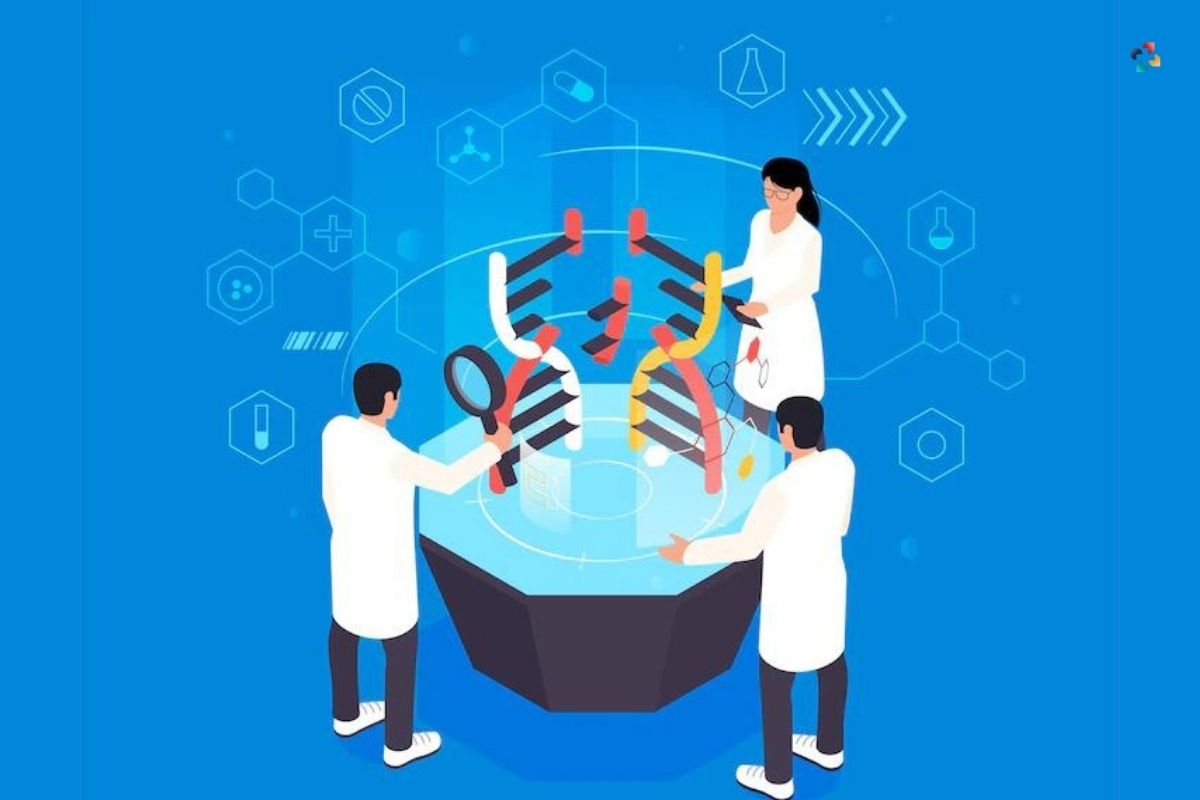New opportunities are opening up as biotech and pharmaceutical businesses begin to use augmented reality in biotech manufacturing in their production facilities. It was the COVID-19 epidemic that prompted people to try new things. The adoption of technology that improves remote work has been driven by travel limitations and a lack of available amenities. Case in point: augmented reality (AR), which is quietly transforming the pharmaceutical and biotech industry.
Layers of text, pictures, videos, and even holograms may be superimposed on top of your real-world view via the use of augmented reality technology. When properly implemented, augmented reality in biotech manufacturing may be a powerful tool for improving the appearance of the real-world environment. Augmented reality is revolutionizing the pharmaceutical and biotech industries by improving quality control, staff education, and supply chain management via virtual teamwork.
Here are 3 ways of how augmented reality in biotech manufacturing;
1. A smart factory
Those obstacles notwithstanding, it is inevitable that virtual and real items will interact in a wide range of businesses. Grand View Research estimated that by 2020, the value of augmented and virtual reality in the healthcare sector will amount to €1.9 billion ($2 billion). By 2028, this industry is expected to be worth €8.8 billion ($9.5 billion).
The industrial sector aspires to further perfect the layout of immersive experiences by making use of high-quality and detailed virtual objects, the increased data transmission enabled by 5G connection and lighter, more compact, and more efficient AR equipment. Stracquatanio argues that device design prevents new applications of augmented reality in biotech manufacturing from being widely adopted.

The proliferation of high-tech gadgets worn on one’s head poses the greatest threat. There are a wide variety of augmented reality (AR) apps, but the number of available AR devices is still relatively small, which might make it difficult for certain organizations to use AR on a wide scale.
By connecting to machines that provide information about how they are performing and which maintenance measures should be taken, AR solutions will move from research and development labs to production as the sector continues to expand. Any step in the process of developing a biotech product has the potential to use augmented reality.
Any manufacturing part with hidden data may benefit from augmented reality in biotech manufacturing, in my opinion. This is true of both digital and “physical” information, such as the kind of product moving through the pipe you are inspecting at the moment.
Industry 4.0 aims to achieve complete process and digital tool integration with sensors and other devices, of which augmented reality in biotech manufacturing is only one component. Integrating augmented reality (AR), Internet of Things (IoT) technology, databases, and augmented reality in biotech and pharmaceutical manufacturing installations will allow for fully interactive user experiences, aiding in even the most complex tasks and providing insights into every aspect of the business.
2. Walking with AR across the factory
Factory employees may now use smart glasses and hand gestures to control virtual equipment, while also getting real-time updates as the system gathers information from a wide range of sources. The smart glasses might alert the worker to a problem, provide maintenance reminders for an instrument, or alert them to the need to replace a worn-out part.
A day in the life of an augmented reality in biotech manufacturing worker can include loading 3D models of equipment and then examining individual parts while seeing accompanying information on a tablet or smart glasses. Another engineer approaches a machine equipped with a QR code, and instantaneous instructions appear in his or her glasses, allowing for quick and easy access to the settings. Just a few feet away, another coworker is reviewing batch records and entering data into the system entirely verbally.
3. Inexperienced staff may carry out complex procedures
Standard operating procedures are the foundation of most tool configuration and setup training, but these procedures are often presented in the form of thick manuals with instructions that are difficult for operators to comprehend and learn from. As a result of augmented reality in biotech manufacturing, knowledgeable workers must devote significant time to training new hires on how to operate the equipment, even doing tasks as uncommon as syringe pump cleaning.
For complex procedures, augmented reality in biotech manufacturing three-dimensional instruction or digital twins (virtual copies of actual equipment) is a major benefit. Because of this, students are able to learn more quickly and remember what they’ve learned longer. Wearables also allow top executives to record themselves doing challenging jobs. This might be useful for training new or inexperienced staff on the processes at their own pace and in their own environment.

PTC, a software development firm, assisted Watson Marlow, a British maker of peristaltic pumps, in adopting augmented reality, to provide just one example. This technology is being developed so that the new workers at the company’s upcoming production facility may benefit from the expertise of its specialist engineers without having to have those engineers on site.
In addition to augmented reality in biotech manufacturing, a second augmented reality app was developed to facilitate communication with prospective buyers and showcase the features of the product in real-time. Thermo Fisher’s laboratory service and support business uses augmented reality as a foundational tool for its interactive staff training programs.
- biotech industry
- pharmaceutical businesses
Bottom Line
When we speak of biotech manufacturing, life science professionals often face various challenges. Some of these include high costs, restrictions from the regulatory bodies, and resourcing of the waste caused by simple errors. Augmented reality in such scenarios is helping the life science industry mitigate these tasks. This has proved to be a win-win situation for manufacturers and patients alike. AR is helping professionals to be equipped with the right information at the right time. This is making the further process seamless and faster. In conclusion- AR technology is here to stay, and using it efficiently will only benefit the industry!











